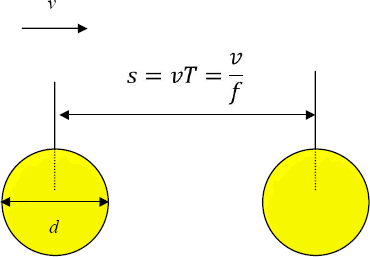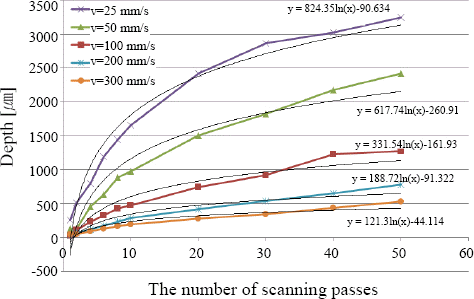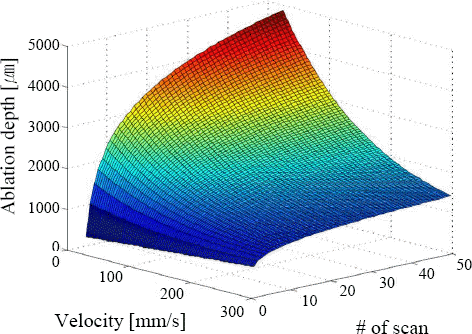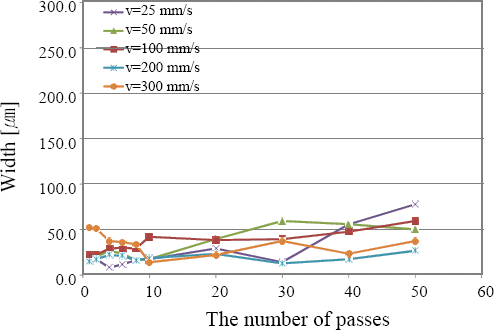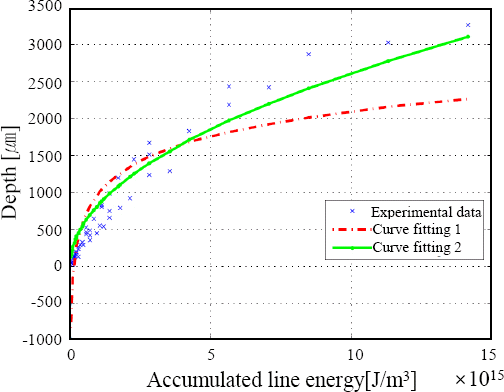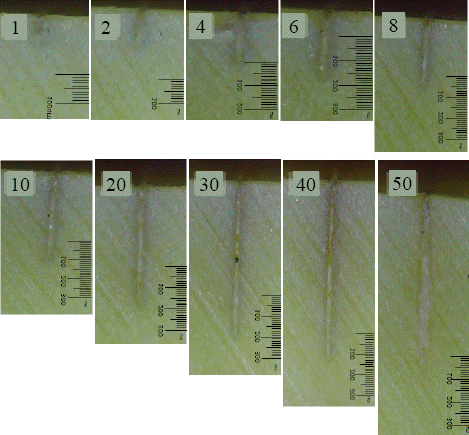Investigation of Laser Ablation on Acrylonitrile Butadiene Styrene Plastic Used for 3D Printing
Article information
Abstract
Microrobotic devices have been widely investigated as promising alternatives to convent biomedical tech- nologies. Microrobotic devices having spatially complex structures such as the helical structures has generally been manufactured by using three-dimensional (3D) printing technologies. However, due to the limitations of the extrusion and lamination processes, microrobotic devices can be constructed with low degree of precision and can have poor surface roughness under the 3D printing technologies. This may cause undesirable damages to the human body tissues. Furthermore, 3D printing requires long processing time due to post- processing to remove unwanted body parts. To improve surface quality and shorten processing time, this research uses laser machining. Before directly applying laser machining to fabricate microrobotic devices, understanding laser ablation characteristics on Acrylonitrile Butadiene Styrene (ABS), which is a common material used for 3D printing, is necessary. Laser ablation characteristics on this material are investigated with a variation of laser parameters such as a scanning speed and the number of scanning passes. An ablation depth prediction model is suggested. Laser ablation on ABS shows a high aspect ratio (~327.2). Furthermore, color changes around the ablation zone can be utilized for the indication to estimate the absorbed laser energy indirectly.
1. Introduction
Microrobotic devices have been widely studied as promising alternatives to conventional biomedical technologies1-3). By utilizing magnetic materials, microrobotic devices can be wirelessly manipulated by external magnetic fields without the use of additional power transfer units or batteries. Thus, the overall structures of the microrobotic devices can be effectively minimized to be applied for the human body. Among various methods such as a magnetic force-based pulling method, cilia-like beating method, and helical (screw- like) propulsion method4-6), the helical propulsion method is especially effective5).
Conventional helical microrobotic devices have generally been manufactured by using three-dimensional (3D) printing technologies7). These technologies are useful when manufacturing spatially complex structures such as the helical structures. However, due to the limitations of the extrusion and lamination processes, microrobotic devices can be constructed with low degree of precision and can have poor surface roughness under the 3D printing technologies which may cause undesirable damages to the human body tissues. Furthermore, 3D printing requires long processing time due to post- processing to remove unwanted body parts. To improve surface quality and shorten processing time, laser machining technology to fabricate helical structure could be a promising option. Laser-aided manufacturing processes including laser machining, laser cutting, and laser welding have been used actively due to their advantages such as non-contact process, fast processing speed, low Heat Affected Zone (HAZ), and high energy density8-18).
Laser machining is one of the active research field. Neuenschwander et. al.19) investigated laser surface structuring with 100W of average power and sub-picosecond pulses on a steel substrate. By using very high speeds of several 100 m/s and repetition rates of several tenths of MHz, an ‘interlaced’ mode can provide a maximum flexibility. Incubation effects depending on the number of pulses applied on two steel alloys during micromachining were studied20). The phenomenological model was introduced and validated for prediction of complex ablation geometries in NiCr films using 10 ps laser pulses21). Daniel et. al.22) established an efficient method for a global parameter determination by varying power, repetition rate, scan speed, and track-distance of the laser process. Investigations were carried out by use of picosecond pulsed laser radiation on a Polycrystalline Cubic Boron Nitride (PCBN) grade with a high cubic boron nitride content and a titanium-based binder.
There are few research concerning ABS material using laser. Those few research are especially focused on the welding technology. Weldability of acrylonitrile/butadiene/ styrene (ABS) plates using laser beam is determined by combining both experimental and theoretical aspects23). Acherjee et al.24) studied diode laser transmission welding of dissimilar thermoplastics between Polymethyl methacrylate (PMMA) and ABS. In addition, to find the optmum solutions, a numerial multi-objective simultaneous optimization technique is incorporated and graphical optimization technique is implemented.
Applying laser machining to fabricate ABS plastic for micro-robotic devices have not been studied. Before directly apply the laser machining to the micro-robotic devices, this research focuses on ablation interaction characteristics between a laser and ABS plastic, used for 3D printing. The ABS is widely used for products such as musical instruments, golf club heads, automotive trim components, and automotive bumper bars due to its light weight and ability to be injection molded and extruded.
Laser ablation characteristics on the ABS are investigated with a variation of laser parameters such as a scanning speed and the number of scanning passes. First, this paper describes material preparation and experimental set-up. Second, results are analyzed and discussed. Moreover, a ablation depth prediction model is proposed. Finally, the conclusion is presented.
2. Experiments
A workpiece is prepared by Digital Light Processing (DLP) 3D printing. Acrylonitrile butadiene styrene (ABS) is used since this is common and widely used plastic for 3D printing. The ABS is a polymer compound and more specifically copolymer. This copolymer is built by chemical composition from acrylonitrile, butadiene, and styrene monomer units. The glass transition temperature of ABS is approximately 105 °C. Due to the amorphous, there is no true melting point. Material properties of ABS are tabulated in Table 1. The ABS combines the strength and rigidity with the toughness, since acrylonitrile and styrene polymers provides the strength and rigidity as well as polybutadiene rubber provides the toughness. Furthermore, the ABS is considered superior for its hardness, gloss, toughness, and electrical insulation properties. While there are many available colors for the ABS, the ABS used for this study has yellow color. The thickness of workpiece is 10 mm.
Experimental set-up is shown in Fig. 1. Diode pumped Q-switched solid state laser (ESI 5335™) is used. Wavelength (λ) is 355 nm and spot size (d) at focus is 15μm. Repetition rate (f) is 40 kHz. A pulse energy (E) is 150μJ. A pulse duration (Δt) is 120 ns. The maximum average laser power is 6 W (Pavg). Scanning speed (ν) varies in the range of 20 to 300 mm/s. For experiments, all laser parameters are set to constant except a scanning speed and the number of scan passes. Distance between two pulses (s) is expressed as
where
3. Results and Discussions
Processed workpieces are shown in Fig. 3, When a laser ablation is conducted, surface color is changed from gray or yellow to brown. This may be due to thermal damage to the surrounding area. If more laser energy is applied, surface color is changed from brown to black. In addition, shiny surface along the scanning direction is observed. The color variation shows that laser ablation of the ABS is becoming a photo-thermal dominant process as laser energy increases25).

Top surface of the ablated workpiece at v=25,50,100,200,300 mm/s. Numbers in the figure indicate the number of scanning passes
Ablation characteristics such as ablation depth (D) and width (W) are investigated. Depth is plotted in terms of the number of scanning passes as shown in Fig. 4. As the number of scanning passes increases, ablation depth increases logarithmically. Logarithmic trends are also plotted in Fig. 4 and the trend is expressed as follows.
where D is depth, and N is the number of scanning passes. In relatively high scanning speed such as 100~300 mm/s, depth seems saturated. In relatively low scanning speed such as 25~50 mm/s, depth is logarithmically increases. It may saturate too if the number of scanning passes increases under the relatively low scanning speed. This saturation may be due to the plasma formation during laser machining process25). Depth differences among the laser scanning speed cases become significant as the number of scanning passes increases. Depth differences between the scanning speed of 25 and 300 mm/s when the number of scanning passes is 10 and 50 are 2267.4 and 5062.8 mm. respectively.
According to Eq. (2), coefficients a and b are obtained and tabulated in Table 4 as well as correlation coefficients (R2) are shown in Fig. 5. As the scanning speed increases, the coefficient a decreases exponentially. On the other hand, the coefficient b increases almost linearly. According to the correlation coefficients (R2), it shows very high co- rrelation.
The coefficients a and b also can be curve-fitted as shown in Fig. 5 and can be expressed as follows
The coefficientsa a and b from the Eq. (2) can be substituted by Eq. (3) and Eq. (4) so that Eq. (2) can be expressed as follows.
Therefore, Eq. (5) suggests an ablation depth prediction model as a function of scanning speed and the number of scanning passes. 3D plot of the ablation depth prediction model is shown in Fig. 6. It is noted that the suggested ablation depth prediction model may be used to find physically meaningful values as if an incubation model is used to find an ablation threshold26).
The ablation width is shown in Fig. 7 in terms of the number of scanning passes. Even though the ablation width is hard to measure consistently, it is obvious that no significant variation in the ablation width is found compared to the depth under the same scanning speed. The ablation depth is quite deep in comparison of the ablation width, thus, the ablation has a high aspect ratio (~327.2). Since the ABS is a semi-transparent, laser energy can be delivered deep inside the ABS. Furthermore, the absorption coefficient may be increased when surface color is changed from yellow to brown to black. Moreover, as the hole is getting deeper, the number of reflection inside the hole is increased so that the multiple reflection dominantly affects the formation of a deep penetration hole. Thus, the high aspect ratio can be obtained.
To compare all parameters used in this study, the scanning speed and the number of scanning passes are expressed by a specific parameter, namely an accumulated line energy. The accumulated line energy is calculated by following expression
where A is the area of laser spot size, v is the scanning speed, and N is the number of scanning passes. Fig. 8 shows depth in terms of the accumulated line energy. Depth increases logarithmically. The curve fitted by a logarithmic function is expressed by
The graph obtained from the logarithmic curve fitting is shown in Fig. 8 and the correlation coefficient (R2) is 0.7695. To have a better fitting, the curve fitting using a square root function can be used and the result is shown in Eq. (8)
This curve fitting graph is shown in Fig. 8 and the correlation coefficient is 0.9842. Both graph and the correlation coefficient show that this curve fitting is better than the curve fitting using logarithmic function.
Cross-sections of the ablated workpieces are observed. Cross-sections of the ablated workpiece at v=25 mm/s are shown in Fig. 9. The width of ablation zone is relatively wide. Especially, at the middle of the ablation depth, the ablation zone is wider than top and bottom of the ablation depth. It may be due to multiple reflections as the ablation zone is deeper. When the number of scanning passes is more than 20, shiny black color can be found. According to the color change, we can estimate absorbed laser energy indirectly
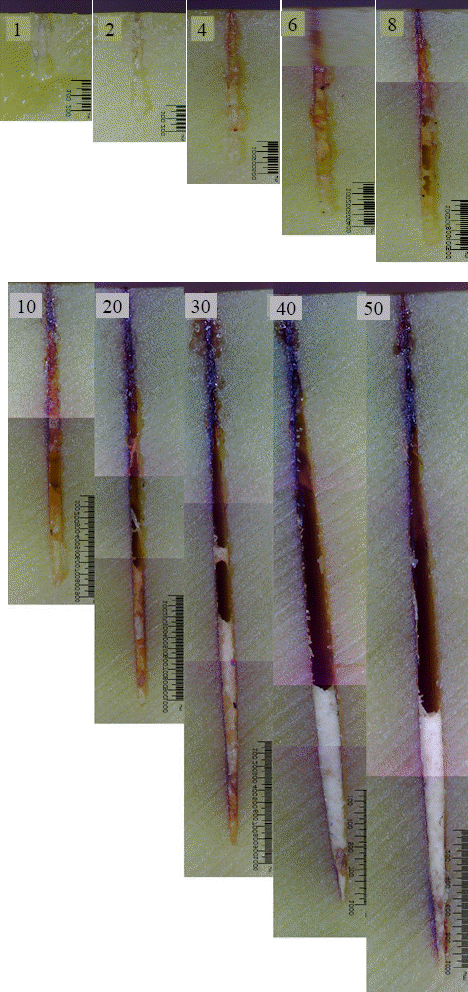
Cross-section of the ablated workpiece at v=25 mm/s (The number of scanning passes are shown in a box)
Cross-sections of the ablated workpiece at v=100mm/s are shown in Fig. 10. While almost similar phenomena are observed to the scanning speed of 300 mm/s, debris is more clearly found. If the number of scanning passes is 20 and more, brown color is found at the interface between the ablation zone and base ABS. In this scanning speed, the debris is partially ablated. As the number of scanning passes increases more than 20, the brown color became vivid and even black color is observed.
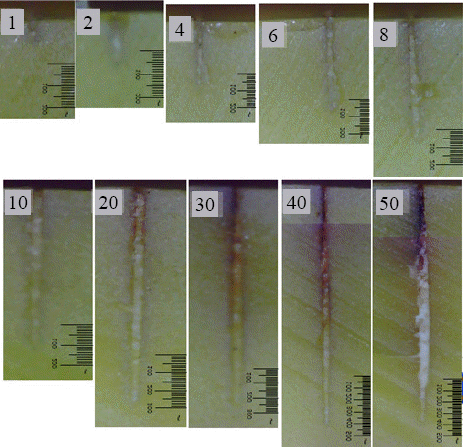
Cross-section of the ablated workpiece at v=100 mm/s (The number of scanning passes are shown in a box)
Cross-sections of the ablated workpiece at v=300 mm/s are shown in Fig. 11. Under v=300 mm/s, overlap between the laser beam is 1, which is the sparsest overlap. Due to the sparsest overlap, the case of v=300 mm/s have the least laser intensity among the other cases. When the scanning speed is 300 mm/s and the number of scanning passes is less than or equal to 2, no clear ablation zone is observed. Just a notch-like shape along the ablation depth is observed. This indicates that the laser energy is interacted and absorbed by the material. If the number of scanning passes is more than or equal to 4, we can observe the ablation zone and color change. Gray color is observed around an ablation zone boundary. As the number of scanning passes increases, the ablation zone is fully filled with a redeposited material, or debris. The debris color is white. The author suspect that the debris is deposited during a wheel dicing process, used to observe the cross-section. These phenomena observed from the scanning speed of 300 mm/s are also observed in the scanning speed of 200 mm/s.
4. Conclusion
Due to the low degree of precision, long post-processing time, and poor surface roughness under the 3D printing technologies, a laser machining technology to fabricate helical structure can be a promising option. This research examines interaction characteristics between a laser and Acrylonitrile butadiene styrene (ABS) used for 3D printing. Laser machining characteristics on this material are investigated with a variation of laser parameters such as a scanning speed and the number of scanning passes. An ablation depth prediction model, or D = 1367.6e−0.007v log(N) + 1.2909v + 369.69, is suggest- ed as a function of a scanning speed and the number of scanning passes. Laser machining on ABS shows a high aspect ratio (~327.2). Furthermore, color changes around the ablation zone can be utilized for the indication to estimate the absorbed laser energy indirectly.



